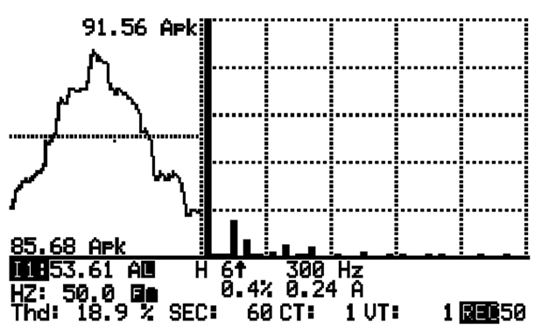Introduction
A harmonics analyzer is the most effective instrument for performing detailed analysis of power quality to determine the wave shapes of voltage and current on respective frequency spectrums.
TESTING EQUIPMENT FOR POWER HARMONICS ANALYSIS
Equipment that we using for testing Power Harmonics Analysis EXTECH PQ-3350: FAULT DIAGNOSED Many types of loads can cause harmonic currents, finding the culprit behind your power quality problem is anything but predictable. Adjustable speed drives, Electrical Panel and uninterruptible power systems are just a few of the devices that generate harmonic currents. However, their presence does not necessarily mean the phenomenon of harmonics exists. One of the most difficult things to determine in power quality analysis is whether a site is a prime candidate for harmonic problems. To help you in your troubleshooting efforts, let's look at the proper methods of measuring harmonic voltages and currents
1.Voltage and current measurements.
Troubleshooting a power system for a suspected harmonics problem must include voltage and current measurements made
with true RMS (root-means-square) digital meters. By using such a meter, you can accurately determine the voltage and
current amplitudes in the presence of non-sinusoidal loads.
These can display the waveform distortion and calculate the exact level of harmonic distortion at various frequencies.
2.Voltage and current distortion
To simplify your investigation, it helps to divide harmonic problems into two categories: voltage waveform distortion and current waveform distortion.
Voltage distortion concerns electric utilities more than current distortion because it affects electrical delivery to the facility.
ISO STANDARD
IEEE standard 519-1992, Recommended Practice and Requirements for Harmonic Control in Electric Power Systems, states the total harmonic distortion (THD) of the voltage waveform provided by the utility cannot exceed 3% of the ideal sine wave. Make this measurement at the point of common coupling (PCC). This is where the utility and facility wiring meet
(usually at the meter box). If the voltage distortion exceeds 3%, the utility should provide some form of mitigation to correct the problem.





 Novotest - NDT
Novotest - NDT
 HKDQTECH - Thermal Imagers
HKDQTECH - Thermal Imagers
 UE Systems - Tools
UE Systems - Tools
